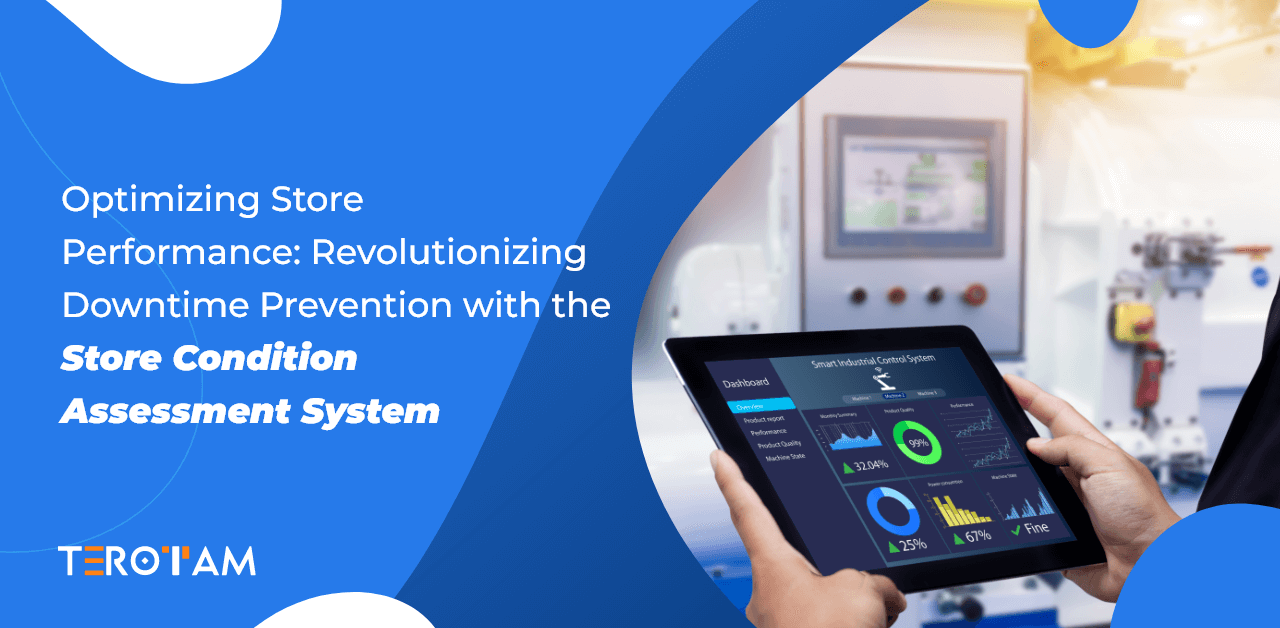Imagine a scenario where a critical piece of equipment fails unexpectedly, causing disruption in-store operations, disappointing customers, and resulting in financial losses. Such instances of unplanned downtime can have a severe impact on the bottom line of retail businesses. However, with the advent of Store Condition Assessment software, retailers now have a powerful tool at their disposal to minimize the risk of unplanned downtime. This cutting-edge software enables businesses to conduct regular inspections, track the condition of stores and assets, and address maintenance needs proactively. By leveraging the capabilities of best store condition assessment solutions, retailers can enhance their operational resilience, optimize maintenance practices, and ensure uninterrupted store performance.
In this blog, we will delve into the ways in which store condition assessment system helps retailers reduce unplanned downtime and create a seamless shopping experience for their customers. But, before we move ahead into the technicalities of the Store condition system and its effects on reducing Unplanned downtime let’s first understand what is Unplanned downtime and Condition monitoring.
Let’s begin.
What is Unplanned Downtime?
Unplanned downtime refers to unexpected periods when equipment or assets are non-functional or fail to perform their intended tasks. It can result from equipment breakdowns, malfunctions, or unforeseen events, leading to production delays, lost revenue, and increased maintenance costs.
What is Store Condition Monitoring?
Store condition monitoring refers to the process of continuously assessing and evaluating the condition and performance of a retail store or physical location. It involves monitoring various aspects of the store’s environment, infrastructure, and equipment to ensure optimal functioning and identify potential issues or areas for improvement.
Store condition monitoring typically utilizes a combination of manual inspections and automated systems to collect data and analyze the condition of different components within the store.
Defeat Unplanned Downtime with TeroTAM’s Store Condition Monitoring
Top Store condition assessment system plays a crucial role in reducing unplanned downtime by providing organizations with comprehensive insights into the condition and performance of their stores. Let’s explore how TeroTAM’s store condition assessment software contributes to minimizing unplanned downtime in different areas:
Enhanced Asset Performance:
Regular store assessments provided by the software contribute to maintaining and optimizing asset performance. By identifying issues such as equipment degradation, signs of wear and tear, or inadequate maintenance practices, businesses can take proactive measures to rectify these problems. Optimal asset performance reduces the likelihood of failures or disruptions during store operations, minimizing unplanned downtime and maximizing productivity.

Integration with Existing Systems:
Integrating condition monitoring systems with existing maintenance management systems, such as CMMS, ERP, or EAM, can be a complex process. Ensuring seamless data flow, interoperability, and compatibility between different systems is crucial for leveraging the full potential of condition monitoring. In some cases, organizations may need to invest in additional software or customization to enable smooth integration and data exchange.
Proactive Maintenance Planning:
By utilizing Store Condition Assessment, businesses can proactively plan and schedule maintenance activities. The software enables the creation of maintenance tasks based on inspection findings, assigning responsibility to appropriate personnel, and tracking progress. By addressing maintenance needs promptly and systematically, organizations can prevent minor issues from developing into major breakdowns. Proactive maintenance planning ensures that equipment is serviced, repaired, or replaced on a regular basis, reducing the risk of unexpected failures and minimizing unplanned downtime.
Automated Workflows:
Store Condition Assessment solution streamlines maintenance workflows by automating various processes. It facilitates the creation of work orders, automated notifications, and task assignments based on inspection results. Automated workflows ensure that maintenance issues are promptly addressed and tracked throughout the resolution process. This streamlining of workflows improves efficiency, reduces administrative burdens, and enables faster response times to maintenance needs, ultimately minimizing unplanned downtime.
Finance Audit:
Store condition assessment system facilitates finance audits by providing accurate and up-to-date information on maintenance and repair costs. It tracks maintenance activities, expenses, and budgets associated with store assets. By having a clear overview of financial data related to store maintenance, organizations can identify areas of excessive spending, track return on investment (ROI), and optimize budget allocation. This data-driven approach enables better financial planning, cost control, and risk management, ultimately reducing the financial burden caused by unplanned downtime.

Store Audit:
Store audits are crucial for assessing the overall condition and functionality of retail spaces. Store condition assessment system simplifies the audit process by enabling systematic data collection and analysis of various parameters such as lighting, fixtures, HVAC systems, safety features, and signage. It allows auditors to identify potential issues or maintenance needs promptly. By proactively addressing maintenance requirements identified during the audit, organizations can prevent unexpected failures or disruptions that may lead to unplanned downtime. The software also aids in prioritizing maintenance tasks, scheduling repairs, and ensuring compliance with safety and regulatory standards.
Asset Audit:
Store condition assessment solution supports asset audits by providing a comprehensive overview of store assets and their conditions. As an Asset audit software, it enables auditors to assess the health, performance, and maintenance history of individual assets, such as HVAC systems, refrigeration units, electrical panels, and security systems. By leveraging the asset audit software’s features, organizations can detect assets at risk of failure, identify trends in asset performance, and schedule proactive maintenance tasks. This proactive approach minimizes the likelihood of sudden breakdowns, reduces unplanned downtime, and improves overall asset reliability and longevity.
Stock Audit:
Stock audits are critical for businesses managing inventory in stores or warehouses. Store condition assessment tool assists in stock audits by monitoring environmental conditions such as temperature, humidity, and air quality, which directly impact product quality and shelf life. The software alerts users to deviations from desired conditions, enabling quick corrective actions. By ensuring optimal storage conditions, organizations can mitigate the risks of stock spoilage, reduce inventory losses, and prevent disruptions in supply chains. This proactive monitoring of stock conditions helps maintain product integrity, customer satisfaction, and uninterrupted operations.
Data-driven Decision Making:
Store Condition Assessment software collects and analyzes data related to store conditions and maintenance activities. This data provides valuable insights into asset performance, maintenance trends, and potential areas of improvement. By leveraging this data, businesses can make informed decisions regarding maintenance priorities, resource allocation, and capital investments. For example, if the software consistently detects recurring issues with a specific type of equipment, management can make data-driven decisions to replace or upgrade that equipment, thereby reducing the likelihood of downtime caused by frequent failures.
Improved Safety and Compliance:
Store Condition Assessment solution helps businesses ensure that their stores comply with safety regulations and standards. By identifying potential safety hazards, such as damaged flooring, malfunctioning fire safety systems, or blocked emergency exits, the software enables businesses to address these issues promptly. By maintaining a safe and compliant store environment, organizations minimize the risk of accidents, injuries, and potential legal liabilities that could result in unplanned downtime.
Conclusion
Unplanned downtime can be a nightmare for any business, resulting in lost sales, dissatisfied customers, and tarnished brand reputation. However, with the advent of the Store Condition Assessment software, the tides are turning in favor of proactive maintenance and downtime prevention. By implementing this innovative software solution, businesses can detect issues early, plan maintenance activities efficiently, make data-driven decisions, streamline workflows, optimize asset performance, and ensure compliance with safety standards.
With Store Condition Assessment software, businesses can transform their business units and stores into resilient, reliable, and customer-friendly spaces, minimizing unplanned downtime and maximizing profitability.
Still, wants to know more? – Feel free to ask our experts at contact@terotam.com or schedule an appointment now to discuss further.





